



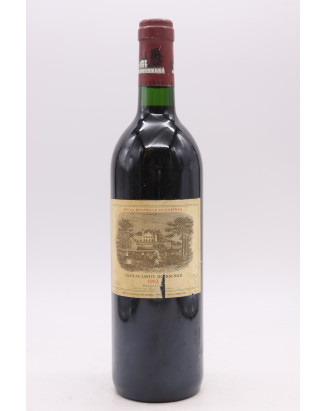


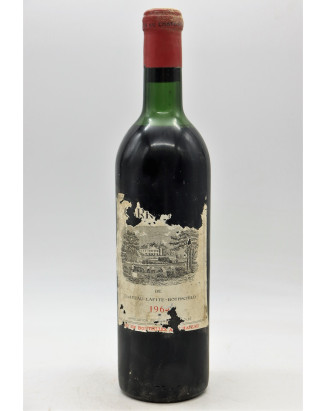

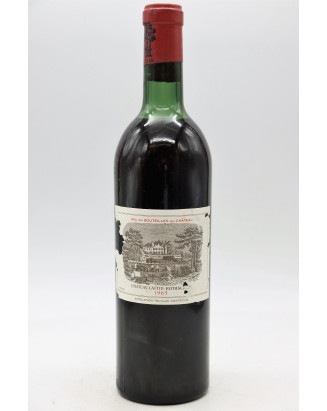











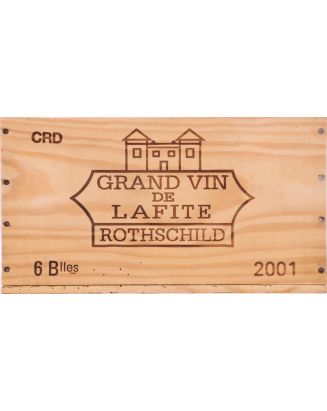

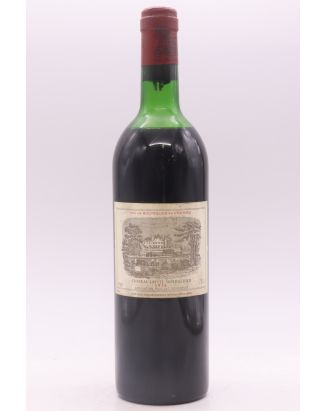
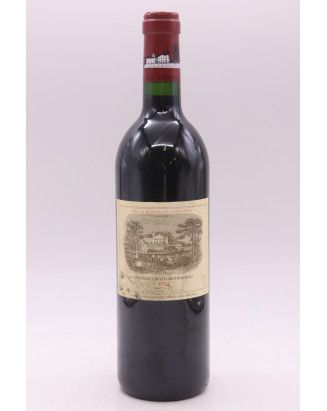
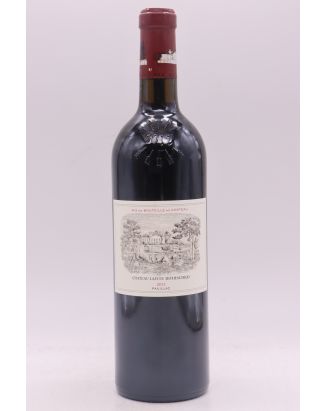
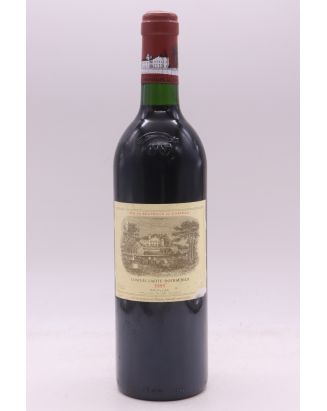




The history of Château Lafite Rothschild dates back to the 14th century, when the first traces of an estate, then a medieval seigniory, were discovered. However, it was from the 17th century that Lafite's wine-making reputation began to forge under the impetus of Jacques de Ségur, the owner who planted the first vines around 1670. His son, Nicolas-Alexandre de Ségur, also nicknamed the "Prince of Vines", then made Lafite wine known to the court of Versailles, where it was quickly appreciated by King Louis XV.
In 1868, the estate was acquired by the Rothschild family, marking the beginning of a new era for Lafite. Under the management of the Rothschild Barons, the château has weathered world wars, economic crises, and technological revolutions in wine, all while maintaining its reputation as a producer of exceptional wines. Today, the estate is led by Saskia de Rothschild, who perpetuates the quest for excellence begun by her ancestors.
Robert Parker has awarded the ultimate score of 100/100 to several outstanding vintages of Château Lafite Rothschild, including 1870, 1959, 2003, 2010, 1953, 2018 and 2019. The 2016 vintage received a 99/100, and years such as 1865, 2008, 1996 and 1982 were rated 98/100, attesting to Lafite Rothschild's continued excellence.
The exceptional terroir of Château Lafite Rothschild is located on the left bank of the Gironde, in the Pauillac appellation. The 112-hectare vineyard benefits from an ideal exposure on gravelly hills, at an altitude of 15 to 20 metres above sea level. This unique soil is composed of Pyrenean gravel, rolled pebbles, and sand, resting on a limestone subsoil. This type of well-draining and poor soil forces the vines to plunge their roots deep, which promotes the aromatic concentration of the grapes and the complexity of the wines.
The vineyard is mainly planted with Cabernet Sauvignon (70%), a grape variety that gives the wines structure and ageing potential. Merlot (25%) brings roundness and suppleness, while Cabernet Franc (3%) and Petit Verdot (2%) contribute to the complexity and depth of the blends. The vines, with an average age of 40 years, are cultivated with care and respect for the environment. Yields are controlled, and the estate strives to apply sustainable practices, with a conversion to organic farming begun in 2021.
The vinification process at Château Lafite Rothschild is based on ancestral know-how, perpetuated and refined over the centuries. The harvest is manual, and each plot is harvested separately to respect the unique identity of each terroir. The grapes are then meticulously sorted before being transferred to wooden, stainless steel, or concrete vats for alcoholic fermentation. This plot-by-plot vinification allows for the extraction of the best from each grape variety and each plot.
Malolactic fermentation takes place in a specific vat room before the wine is transferred to oak barrels. The château has its own cooperage, ensuring perfect control over the quality of the barrels. For the Grand Vin, Château Lafite Rothschild, ageing lasts between 18 and 20 months in 100% new barrels, which brings subtle notes of vanilla, spices, and toasted wood, while respecting the purity of the fruit.
Château Lafite Rothschild, produced from the oldest and best-situated plots of the estate, is considered one of the best wines in the world. Made primarily from Cabernet Sauvignon (up to 95% depending on the vintage), this wine is distinguished by its aromatic complexity, finesse, and immense ageing potential. On the palate, the tannins are silky and refined, while aromas of red fruits, cedar, graphite, and spices evolve over time to offer an unforgettable tasting experience.
Les Carruades de Lafite is the estate's second wine, produced from young vines or less well-exposed plots than those used for the Grand Vin. Aged in barrels for 16 to 18 months, it is more accessible in its youth, with fruity and spicy notes. This elegant and well-structured wine also has excellent ageing potential and represents a more affordable alternative to the Grand Vin, while retaining Lafite's distinctive style.
Château Lafite Rothschild is renowned for producing wines of great longevity, capable of ageing for several decades. Certain vintages stand out particularly for their quality and finesse. Here are some years to explore: 2020, 2018, 2016, 2015, 2010, 2009, 2005, 2000, and 1996. These vintages, among others, illustrate the consistency and excellence of the wines produced by Château Lafite Rothschild, which seduce amateurs and experts alike.
For lovers of great Bordeaux wines, the Médoc region is full of other prestigious properties to discover. For example, Château Latour, Château Margaux, Château Mouton Rothschild, and Château Haut-Brion, which, like Château Lafite Rothschild, are the First Growth of the Médoc. These emblematic estates also produce wines of exceptional quality and are recognised worldwide for their wine-making expertise.
With its rich history, unique terroirs, and commitment to excellence, Château Lafite Rothschild continues to reign among the greatest names in wine. Whether for long-term investment or for the pleasure of tasting a mythical wine, each bottle of Lafite is a tribute to centuries of wine-making perfection.